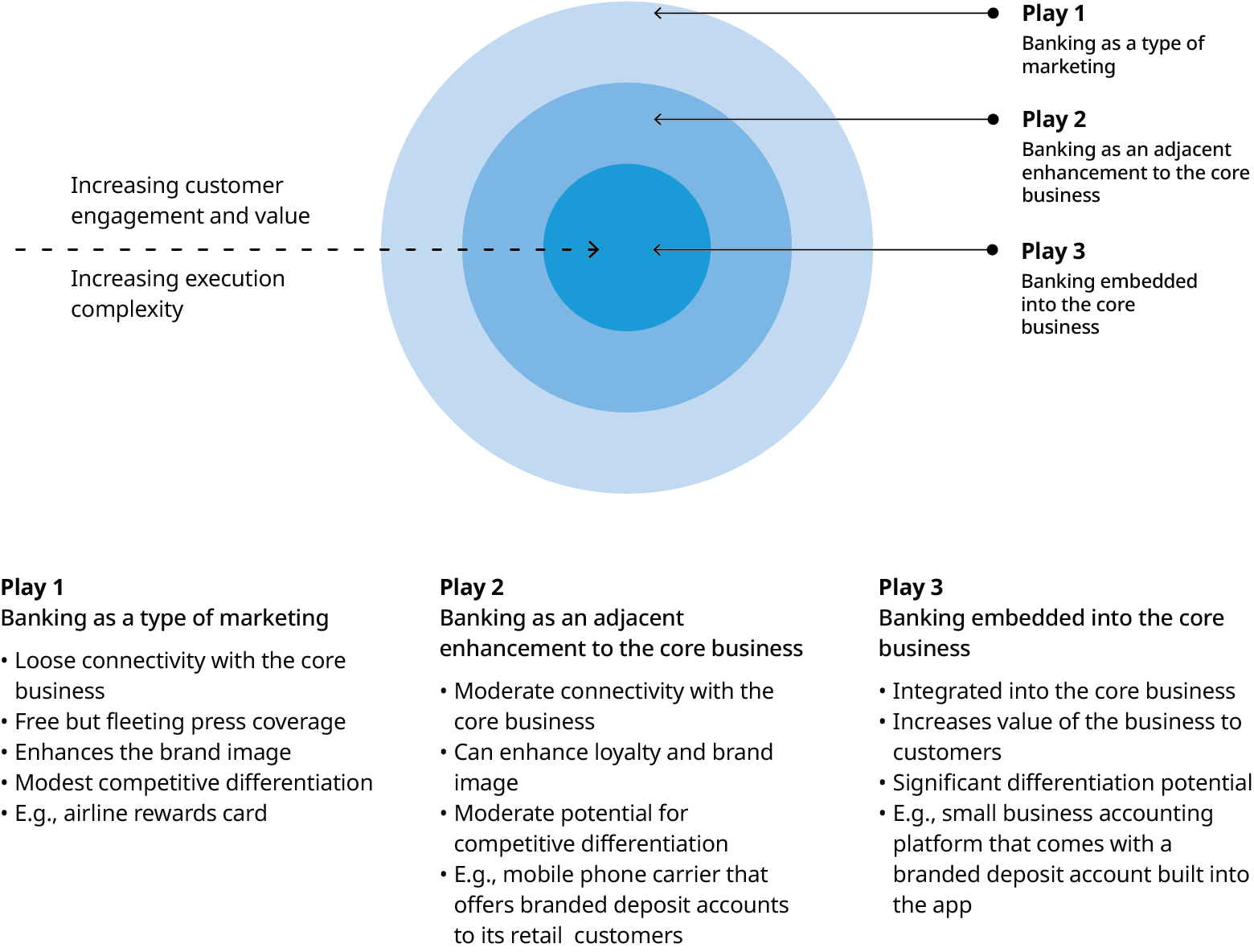The marketplace for banking services is about to get a lot more crowded — and much more interesting. What today is a trickle of non-bank entrants is set to become a flood in the next few years as non-bank firms learn how they can offer these services without needing to become a bank. To get ahead of the rush, companies with strong brands and large consumer or small business franchises should make haste to explore this growing opportunity.
In today’s prevailing model of banking, consumers and small businesses must go — physically or virtually — to a bank to get their banking needs met. But within the next one to two years, consumers and small businesses increasingly will be able to access banking services from nonbank brands with which they already have a trusted relationship. This will shift the engagement model of banking from one defined by the banking industry — “you need to come to our branch, bank website, or app to do your banking” — to a model defined by customers, in which they can get banking when and where they want or need it. When and where will certainly include nonbanking journeys like buying a house or managing a small business’s books.
The prize is big. We estimate the annual retail banking revenues up for grabs is up to $400 billion.
Hence it comes as no surprise that early signs of a rush are appearing, supported by the fast-rising trend of banking-as-a-service. Several non-bank brands already have embraced this opportunity and are making banking part of their corporate strategies. In just the last 12 months, national convenience store retailers, tax preparation services, small business accounting software providers, mobile phone carriers, and e-commerce marketplaces have launched or announced plans to launch FDIC-insured deposit accounts — specifically transaction accounts — for their customers.
These companies recognize that a thoughtful, well-executed move into banking can bring them closer to the main goal of almost all business-to-consumer firms: becoming increasingly central in the lives of their customers by helping them meet their needs or solve big problems.
As an example of this customer-centric mindset, imagine a retailer focused on helping customers with their physical wellness also being able to help with their financial wellness by providing banking services and financial advice. Or consider an online platform that hosts the digital storefronts of small merchants also helping its customers (merchants) understand, forecast, and smooth their cash flows, all because the platform provides a business deposit account.
Many non-bank brands are exploring banking because of the meaningful strategic benefits it can provide. First, banking offers an opportunity to differentiate competitively, thereby accelerating new customer acquisition and enhancing the brand. Second, it can create new sources of revenue, like capturing a portion of interchange fees from customer debit account transactions, and create indirect financial value by slowing customer churn. For example, some brands that offer banking products alongside their core offerings find that customers with branded banking accounts attrite at a meaningfully lower rate than those without accounts, thereby creating huge spill-over value for the core business.
Third, banking allows firms to increase engagement by providing customers another way in which to interact with the company — or eliminate the need to leave the company’s platform to engage with a traditional bank. Lastly, banking offerings can provide new and valuable insights into customer behavior and preferences from data flowing from banking activities, like deposit account spending.
For non-bank brands that want to explore banking, we see three potential plays with differing levels of execution complexity, customer engagement, and long-term value creation for nonbanks and their customers.

To read more about how major brands can use banking for competitive advantage, download the full report below.
